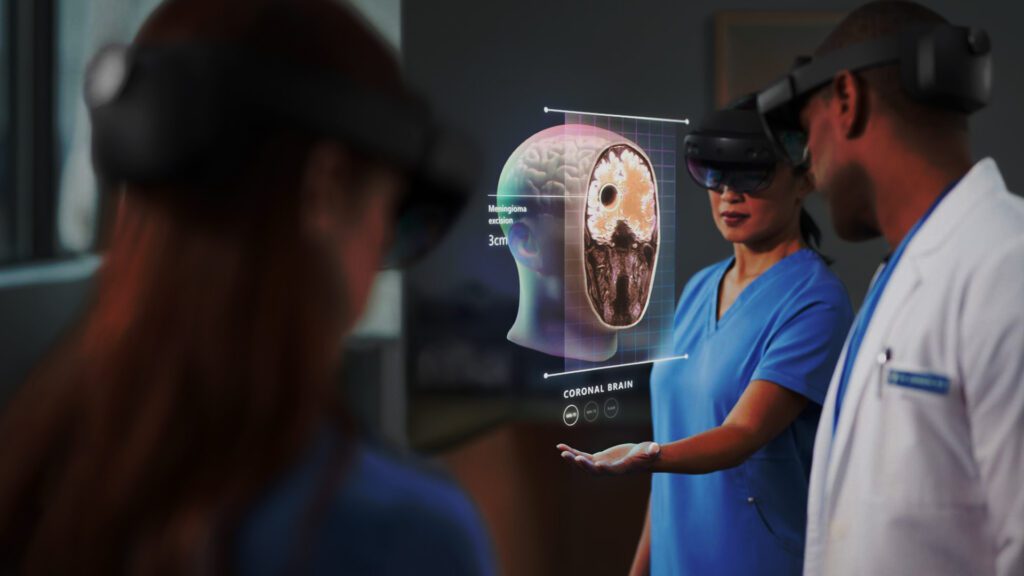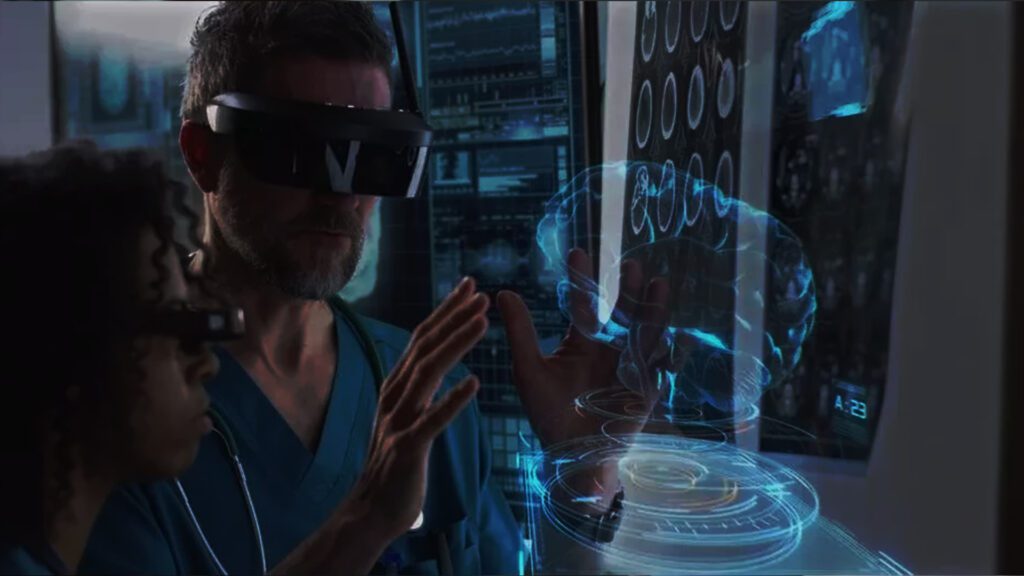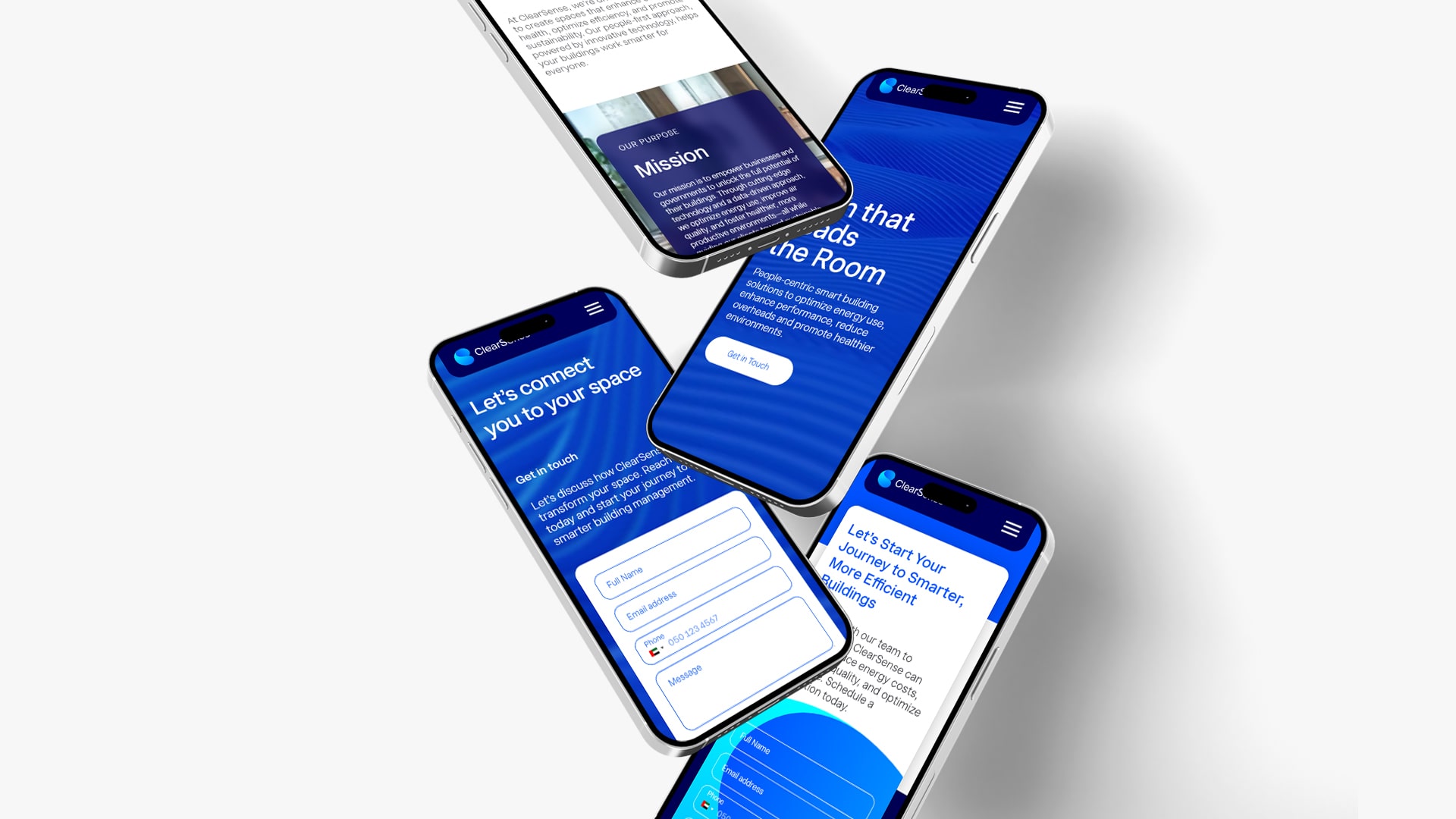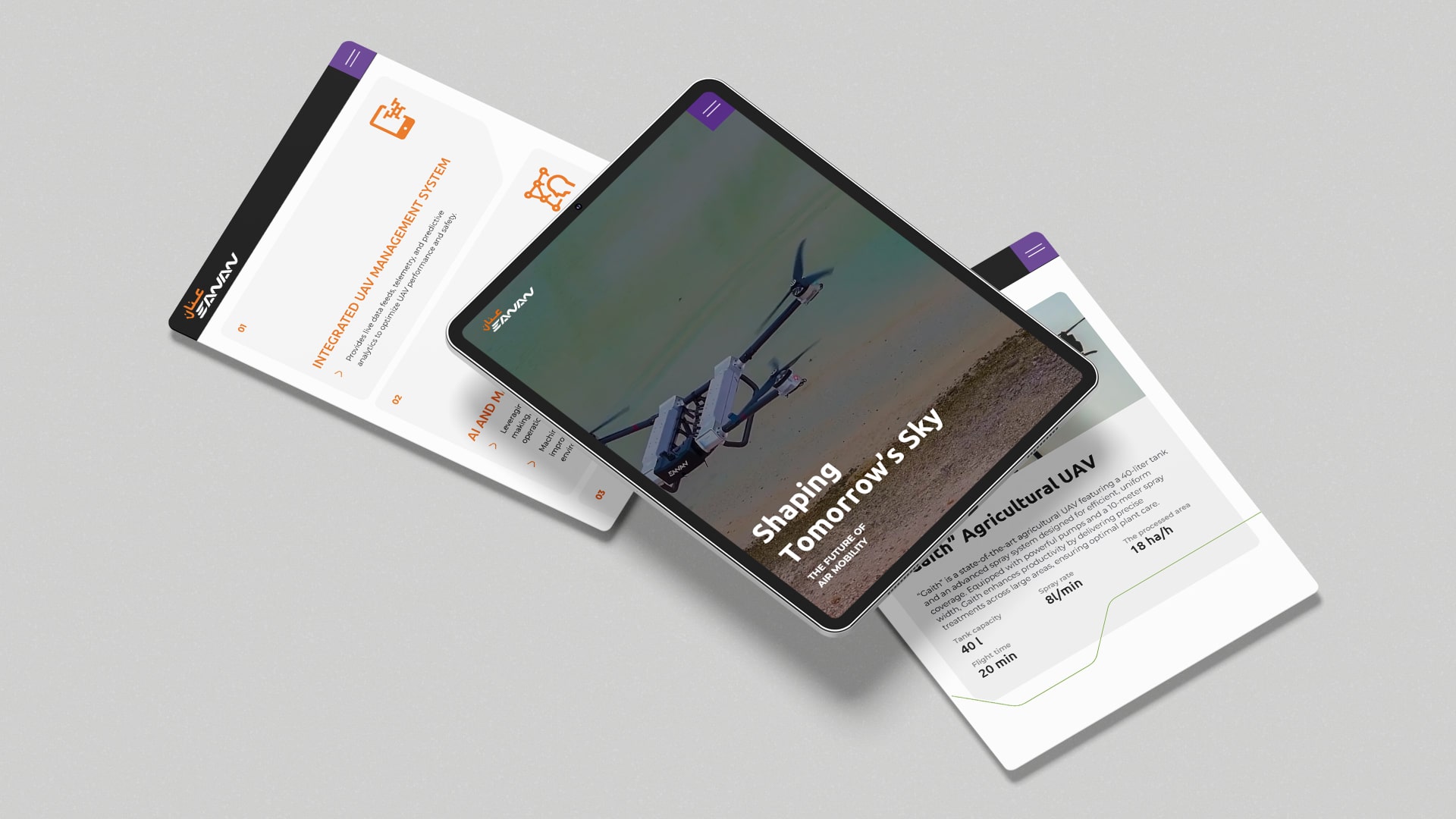Have you ever thought about how virtual reality is used in healthcare? We can start from the very beginning; what Virtual reality means is that a projected 3D environment called virtual reality allows individuals to explore and connect with a simulated space in a manner that simulates reality as it is experienced by the users’ perceptions. Although the experience is built using computer hardware and software, individuals may be required to put on equipment like helmets or goggles to communicate with it.
Users are better equipped to suspend reality and treat a VR experience as real, even if it is fanciful, the more entirely they can engage themselves in it and filter out their physical environments. Virtual reality now plays an important role in the healthcare industry, and it has a promising future in the medical field. We will help you get your answer to the question of how virtual reality is used in healthcare, let’s get started.

How is Virtual Reality Used in Healthcare: the applications
According to the majority of research and studies, as well as medical professionals, virtual reality VR aids the healthcare industry in providing high-quality services and treatments on time. Even medical students can easily understand their academics with the use of VR. Most patients nowadays prefer virtual reality healthcare services over traditional treatments. Because it aids in the quick recovery of all patients.
- VR in healthcare for surgery
- VR in healthcare for pain management
- VR in healthcare for medical training
- VR in healthcare for patient support
- VR in healthcare for – physical treatment
VR in healthcare for surgery
The importance of virtual reality in surgery is relevant in present healthcare situations. To begin with, it assists every surgeon in preparing and planning the surgery before the surgery. And it allows the surgeon to perform the surgery at a low cost; it also increases the surgery’s success rate. A surgeon operates virtually in a virtual operating theatre using sensory devices. The software directs a user through each phase from beginning to end, making it easy for them to maintain the proper order of operations. The VR program can also be used to educate patients about surgical procedures.
VR in healthcare for pain management
We know that patient comfort and satisfaction are the main goals of every medical professional. Some treatments are extremely painful, and some patients experience pain while undergoing treatment, so controlling or minimizing pain is critical. VR helps the patients minimize pain. Following this immersion in the VR simulation, patients have the opportunity of transferring into an extremely realistic space with a calming ambience and acoustic treatment to assist them to relax.
VR in healthcare for medical training
One of the important applications of VR in healthcare is medical training. VR allows every medical professional or medical student to gain experience and knowledge very easily. It assists medical professionals in improving their skills by providing experience through the recreation of real-world scenarios. When a user enters the virtual space of a VR app, they join a training scenario where they are expected to carry out specified tasks, such as conducting a medical procedure or operating surgical devices. It will also help to reduce the cost of studying and minimize difficult situations while studying.
VR in healthcare for patient support
Virtual reality has the power to move you within and outside of the patient’s psyche, allowing you to get to and view spaces which are normally inaccessible. Through the use of various virtual reality methodologies, virtual models can be demonstrated in real-time, permitting medical professionals to provide patients with more detailed explanations of essential information that will help them better understand their situations and understand how therapies and treatments will perform. So VR plays a vital role in supporting every patient.
VR in healthcare for – physical treatment
How is VR used in the medical field? The answer is simple: it can be successfully used for physical treatment.VR for physical therapy has indeed proven promise for quickening the healing process. The patient’s regular workouts become more enjoyable, keep them concentrated and assist them in remaining positive throughout what can be a protracted rehabilitation process when they are carried out in a virtual setting. How is virtual reality used in healthcare? It can also aid in the growth of the healthcare industry.

Importance & advantages of using VR in the medical field
- By the use of VR, clinicians will be able to provide more effective care because of the VR software’s convenience of handling and solid processing capabilities. In the end, it will help the healthcare sector save money, provide better patient care, and increase profits.
- How important is VR in the medical field? It reduces the risk factor. We know that there is a heavy risk associated with treatments like surgery, so the use of VR helps to reduce the risk factor and increase the chance of success in treatments.
- Virtual reality helps every patient complete their treatment at a minimal cost. It reduces healthcare costs when compared to traditional treatments.
Conclusion
So in simple terms, how is virtual reality used in healthcare, it creates an understandable relationship between patients and healthcare professionals. VR helps facilitate easy interaction regarding treatment. And how VR is used in the medical field: the creation of real-time situations through VR allows the medical field to access every treatment conveniently and quickly. And VR is an indispensable component of the future healthcare scenario.
For more such blogs, Connect with GTECH.
Related Post
Publications, Insights & News from GTECH








